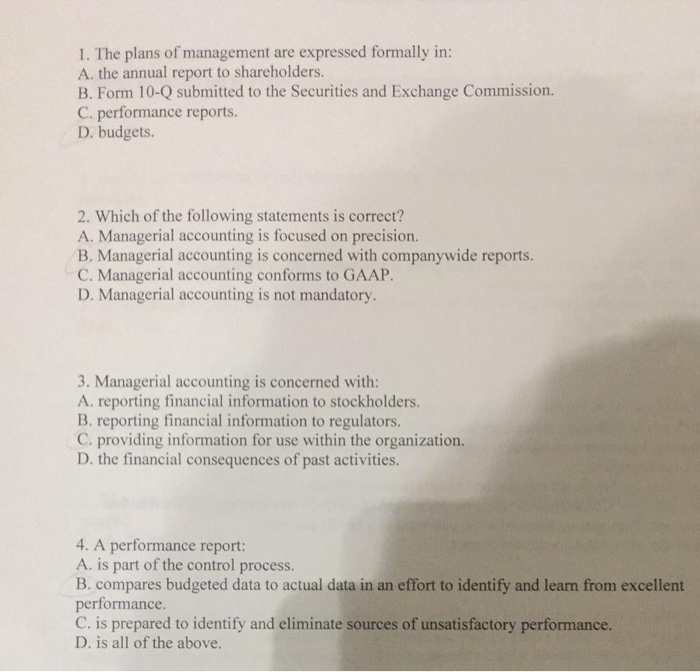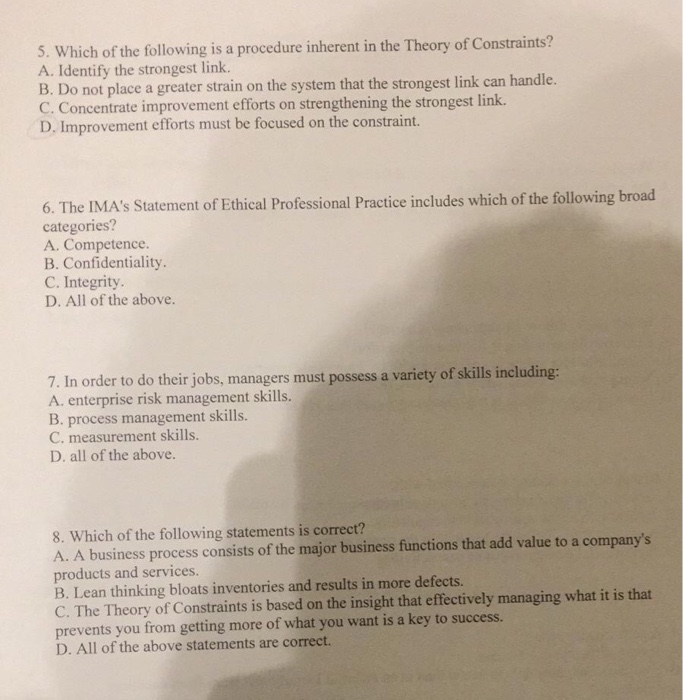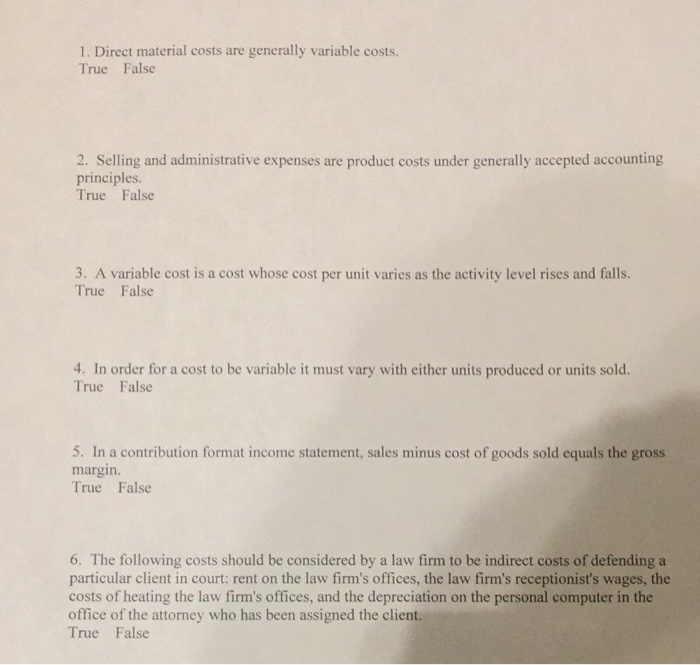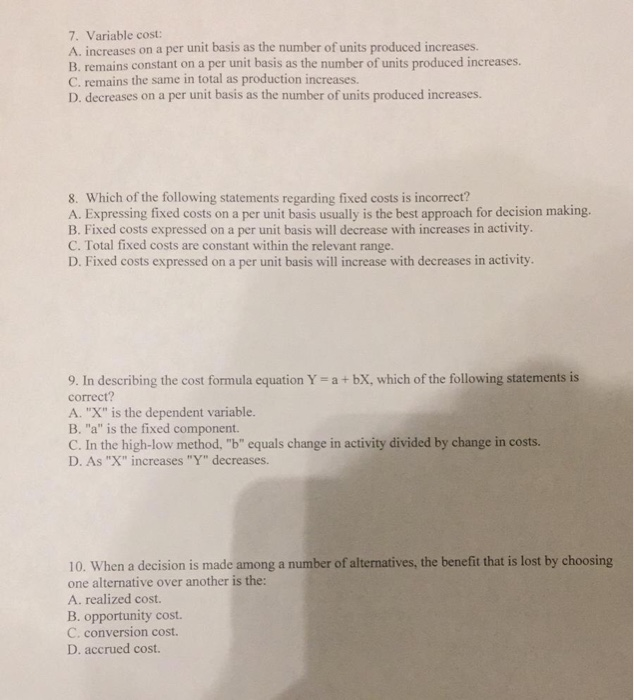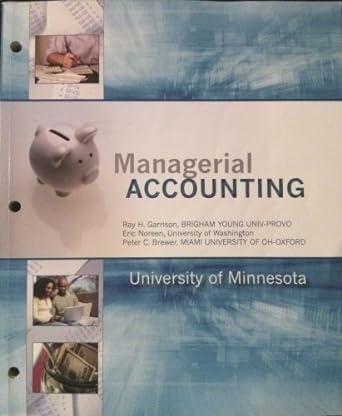1. The plans of management are expressed formally in: A. the annual report to shareholders. B. Form 10-Q submitted to the Securities and Exchange Commission. C. performance reports. D. budgets. 2. Which of the following statements is correct? A. Managerial accounting is focused on precision. B. Managerial accounting is concerned with companywide reports. C. Managerial accounting conforms to GAAP D. Managerial accounting is not mandatory 3. Managerial accounting is concerned with: A. reporting financial information to stockholders. B. reporting financial information to regulators. C. providing information for use within the organization. D. the financial consequences of past activities. 4. A performance report: A. is part of the control process B. compares budgeted data to actual data in an effort to identify and learn from excellent performance. C. is prepared to identify and eliminate sources of unsatisfactory performance. D. is all of the above 5. Which of the following is a procedure inherent in the Theory of Constraints? A. Identify the strongest link. not place a greater strain on the system that the strongest link can handle C. Concentrate improvement efforts on strengthening the strongest link. D. Improvement efforts must be focused on the constraint. 6. The IMA's Statement of Ethical Professional Practice includes which of the following broad categories? A. Competence. B. Confidentiality. C. Integrity. D. All of the above. rder to do their jobs, managers must possess a variety of skills including: 7. In o A. enterprise risk management skills. B. process management skills. C. measurement skills. D all of the above. 8. Which of the following statements is correct? A. A business process consists of the major business functions that add value to a company's products and services. B. Lean thinking bloats inventories and results in more defects. C. The Theory of Constraints is based on the insight that effectively managing what it is that prevents you from getting more of what you want is a key to success. D. All of the above statements are correct. 1. Direct material costs are generally variable costs. True False 2. Selling and administrative expenses are product costs under generally accepted accounting principles. True False Ire rihle o a ost whose cost per unit are as thr seivity lvel rises and fall 4. In order for a cost to be variable it must vary with either units produced or units sold. True False 5. In a contribution format income statement, sales minus cost of goods sold equals the gross margin. True False 6. The following costs should be considered by a law firm to be indirect costs of defending a particular client in court: rent on the law firm's offices, the law firm's receptionist's wages, the costs of heating the law firm's offices, and the depreciation on the personal computer in the office of the attorney who has been assigned the client. True False 7. Variable cost: A. increases on a per unit basis as the number of units produced increases. B. remains constant on a per unit basis as the number of units produced increases. C. remains the same in total as production increases. D. decreases on a per unit basis as the number of units produced increases 8. Which of the following statements regarding fixed costs is incorrect? A. Expressing fixed costs on a per unit basis usually is the best approach for decision making. B. Fixed costs expressed on a per unit basis will decrease with increases in activity C. Total fixed costs are constant within the relevant range. D. Fixed costs expressed on a per unit basis will increase with decreases in activity 9. In describing the cost formula equation Y-a bX, which of the following statements is correct? A. "X" is the dependent variable. B. "a" is the fixed component. C. In the high-low method, "b" equals change in activity divided by change in costs. D. As "X" increases "Y" decreases. 10. When a decision is made among a number of alternatives, the benefit that is lost by choosing one alternative over another is the: A. realized cost. B. opportunity cost. C. conversion cost. D. accrued cost
